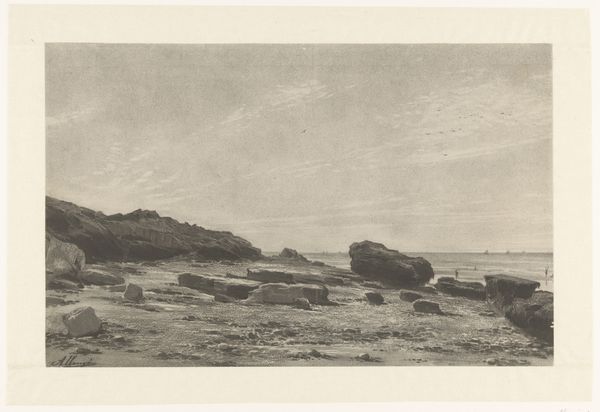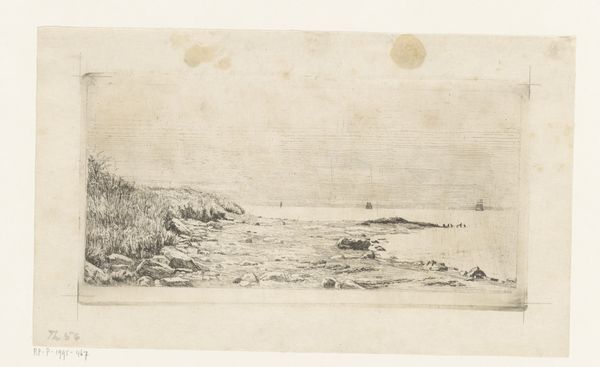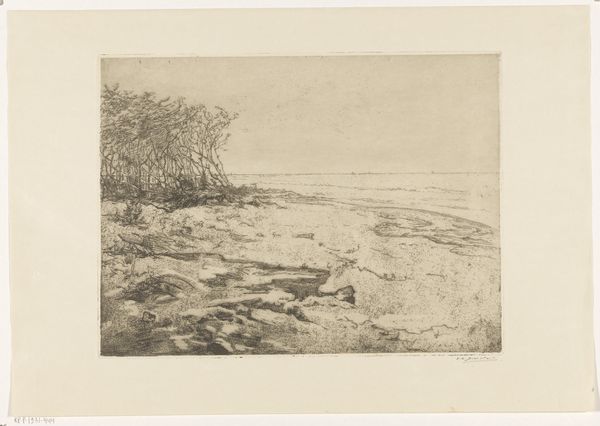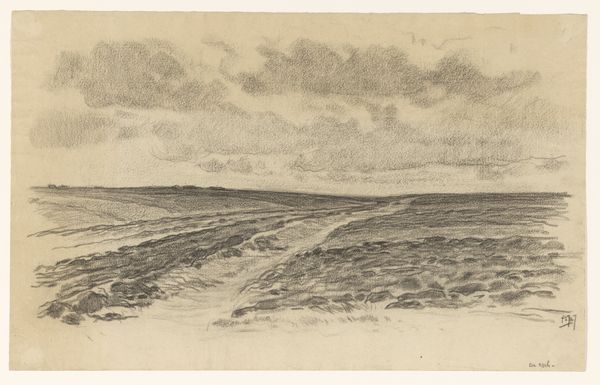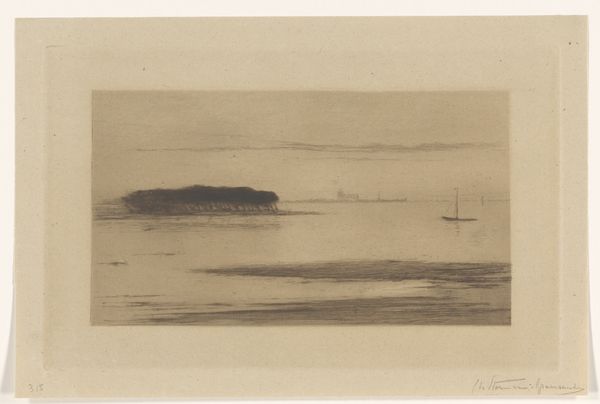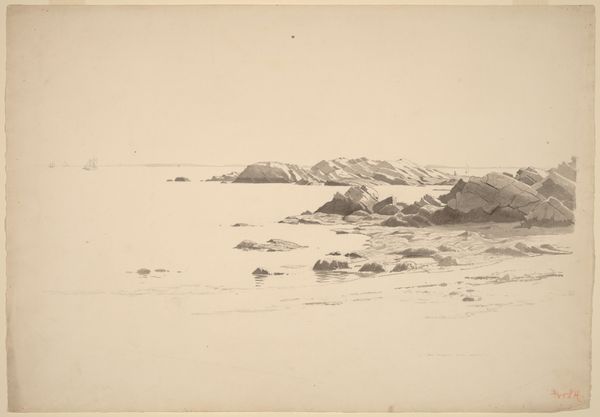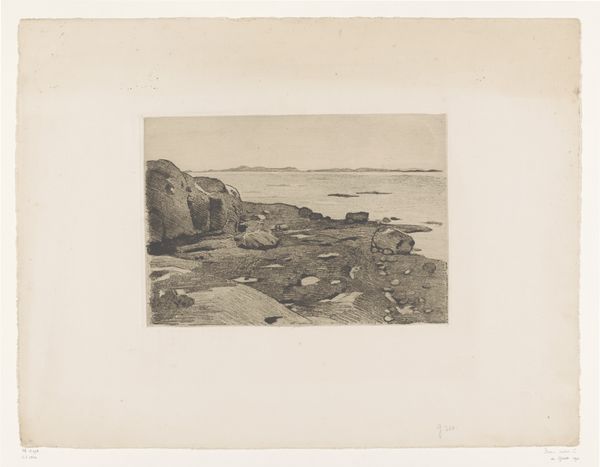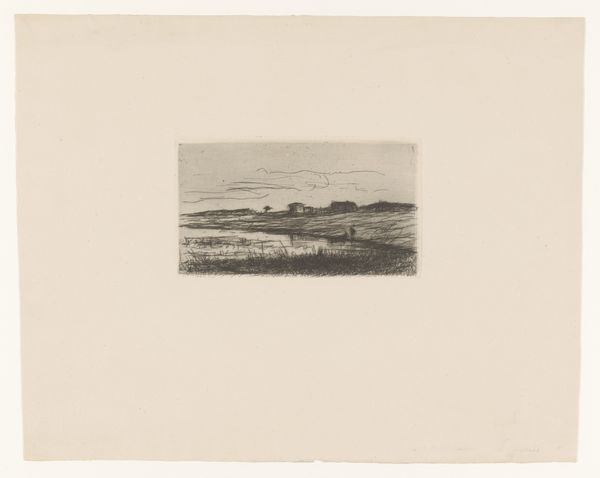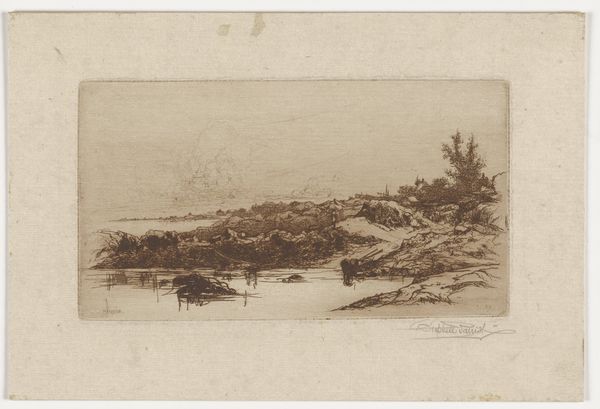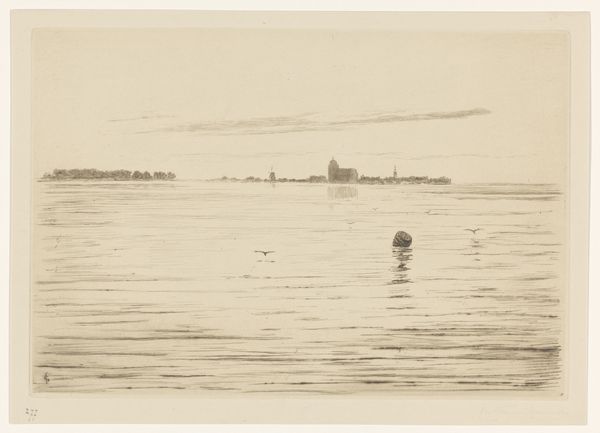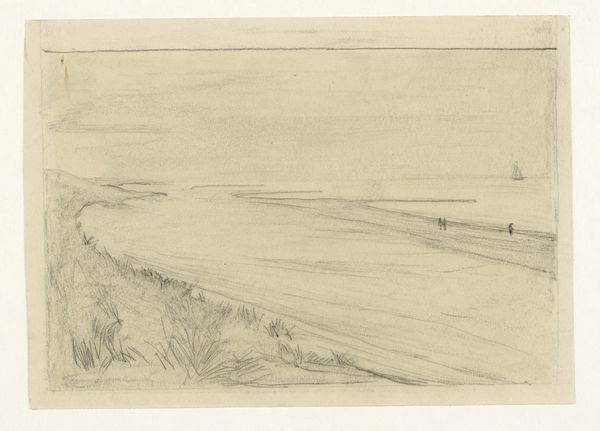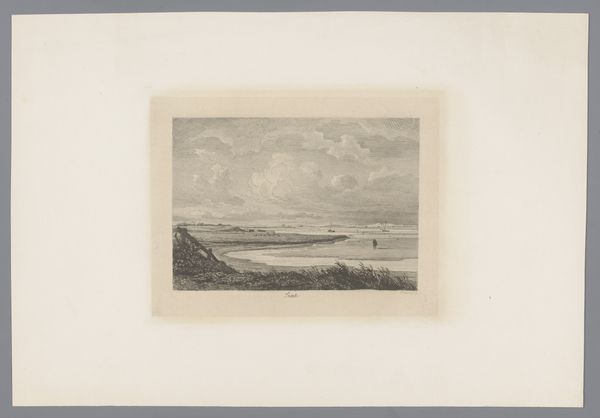
print, etching
#
16_19th-century
# print
#
etching
#
landscape
#
realism
Dimensions: height 106 mm, width 209 mm
Copyright: Rijks Museum: Open Domain
Editor: This is Carl Bloch’s 1884 etching, "Coast with Dune and Rocks.” It's a quiet scene, rendered in delicate lines. It feels melancholic. What visual symbols jump out at you? Curator: The most prominent symbols relate to boundaries, both physical and psychological. The shoreline is never just a line; it's a place where the solidity of the land meets the fluidity of the unconscious, represented by the sea. Do you see how the grasses almost aggressively frame the left of the etching? Editor: Yes, now that you mention it, they seem to be warding off an unseen presence from encroaching on the landscape. Curator: Precisely. And the ships in the distance…they represent journeys, of course, but also the human impulse to explore, to conquer the vastness of the unknown. Think about the etymology of "sea," which is tied to words about "seeing." Bloch has seeded this artwork with the idea of knowledge seeking. How do those elements play into your impression of melancholy? Editor: Perhaps that there's something ominous to that seeking; like whatever is over the horizon cannot be unseen, that the return voyage is impossible, and whatever peace one had will now be disturbed. Curator: A keen reading. Also, remember the psychological weight of the period. This etching reflects late 19th-century anxieties around industrialization and loss of traditional ways of life. It's as if the coastline itself is a fragile defense against an encroaching modernity, which perhaps fuels our feeling of melancholy. Editor: That context enriches the viewing experience greatly. Thank you for your insights! Curator: My pleasure. Hopefully, now the emotional and symbolic landscape of this work has been unearthed.
Comments
No comments
Be the first to comment and join the conversation on the ultimate creative platform.
